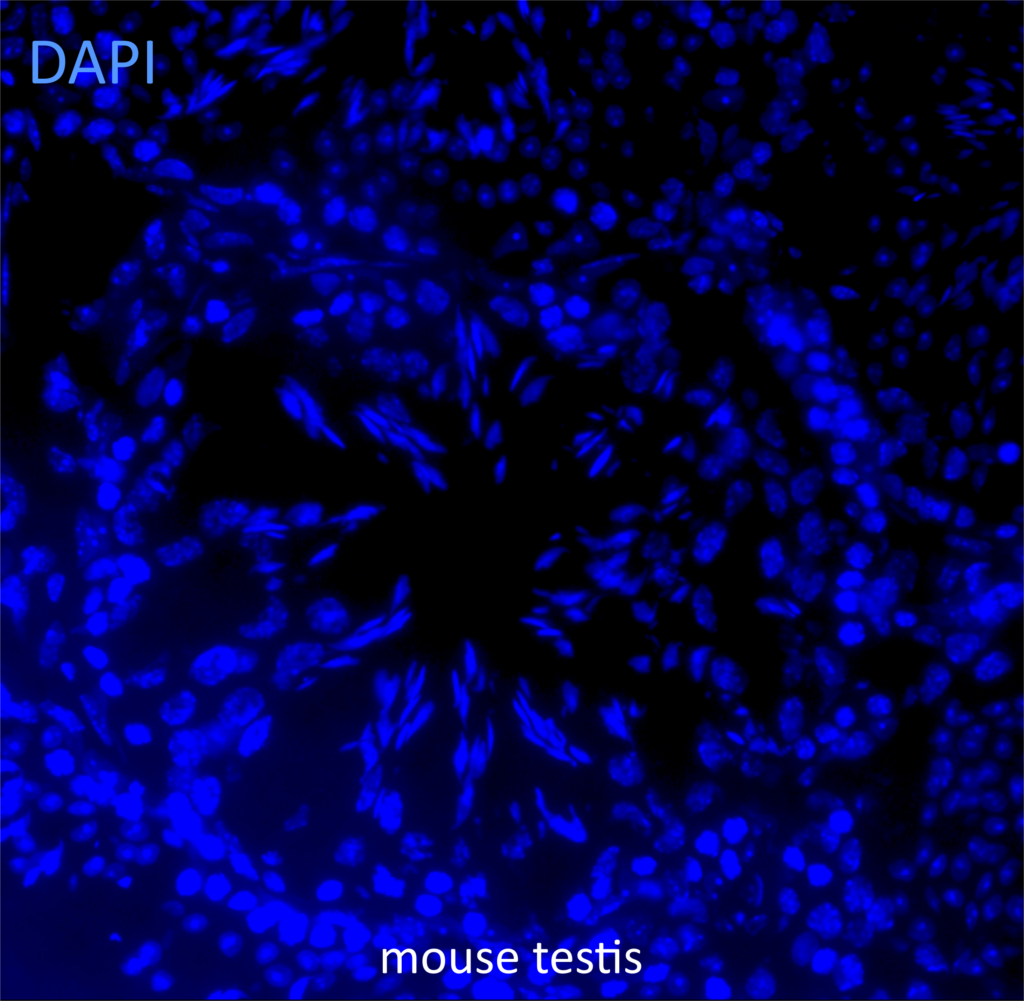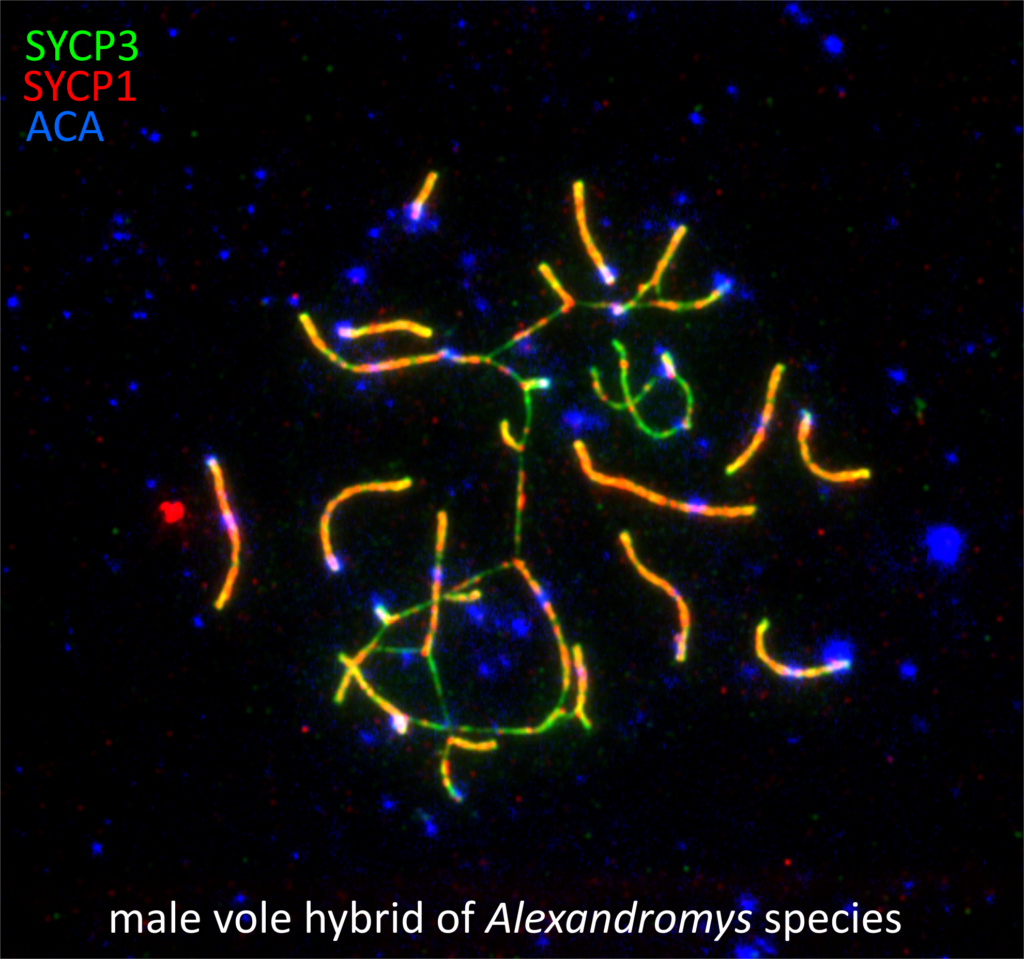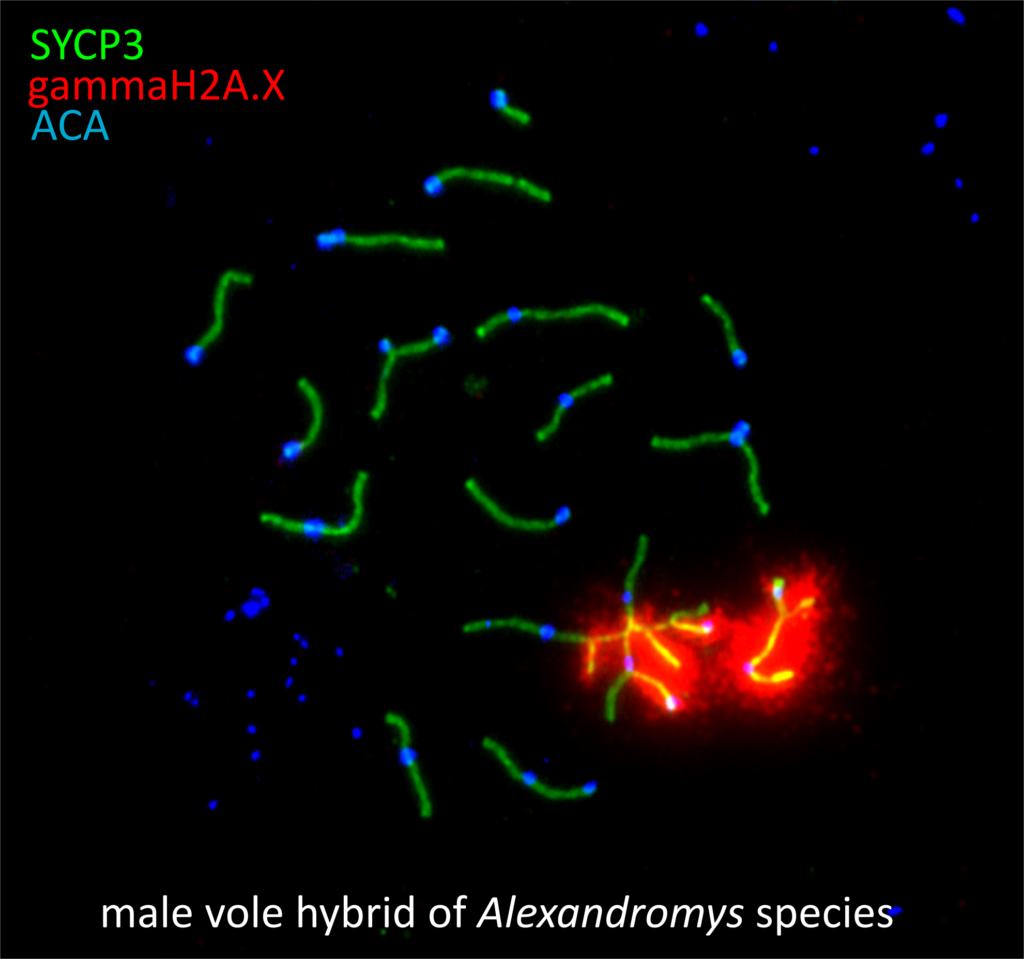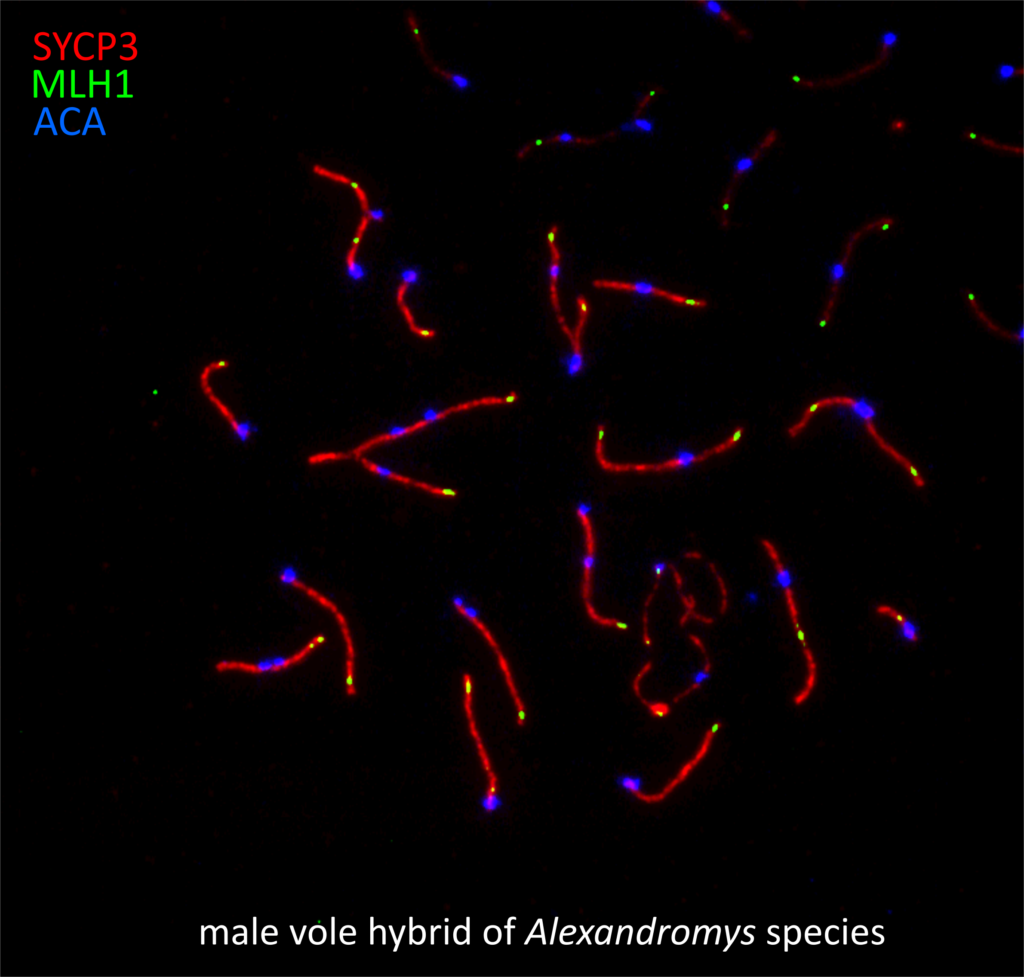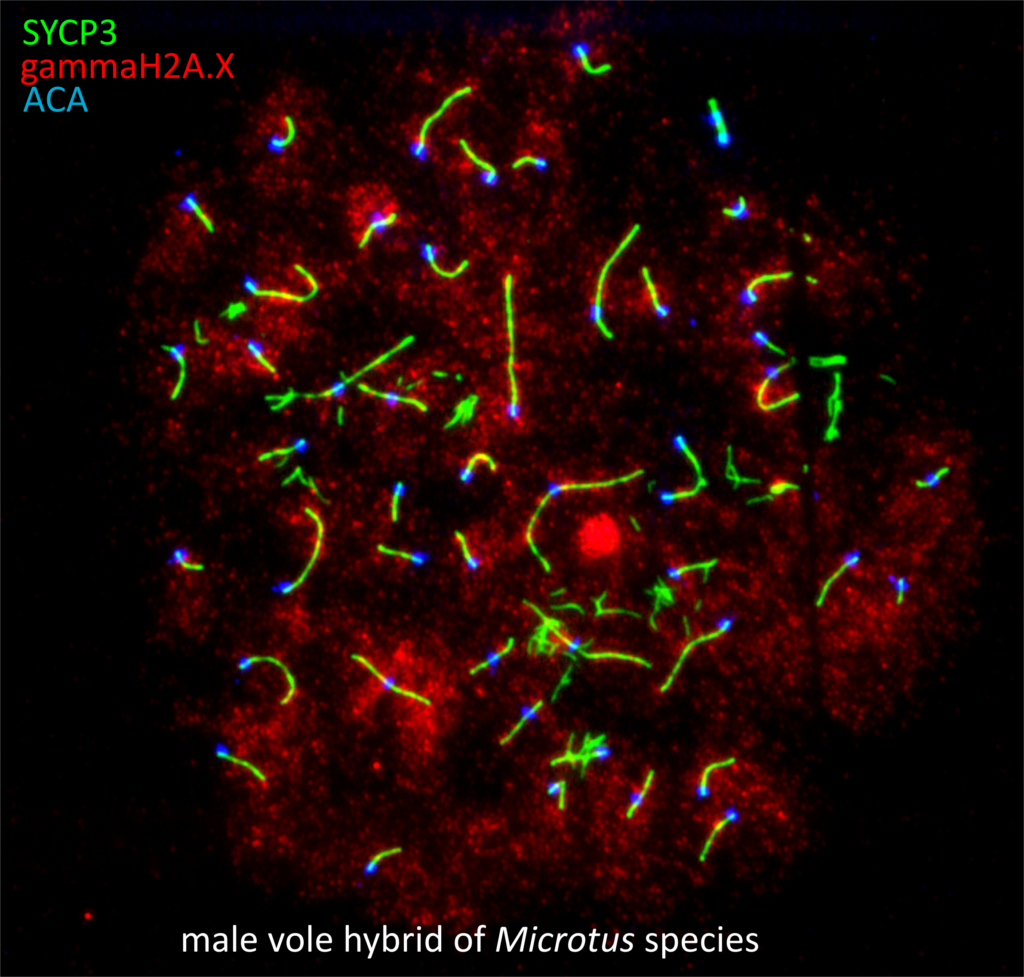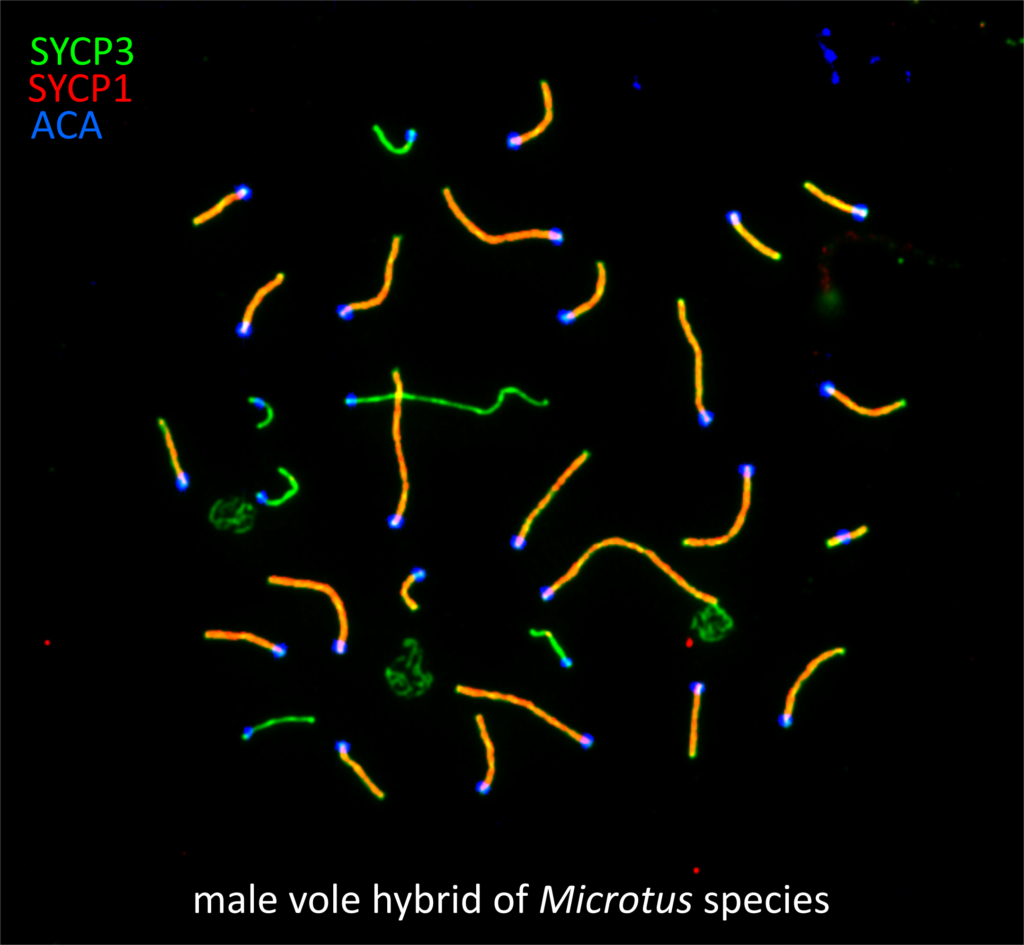The aim of this project is identification of cytogenetic and molecular mechanisms of hybrid sterility between evolutionary closely related forms.
The main factors leading to the formation of hybrid sterility are the accumulation different chromosomal rearrangements and gradual divergence at the genetic and genomic levels. However the interplay of these factors at the cytogenetic and molecular levels remains still unexplored.
The subject of this study are the grey voles of the subfamily Arvicolinae, characterized by rapid karyotypic and/or genetic divergence. The analysis of intra- and interspecific hybrids of Microtus and Alexandromys genera with various degrees of sterility provides a unique opportunity to study the formation of hybrid sterility at the early stages of speciation using modern histological, cytogenetic, molecular and bioinformatics methods. Within the framework of this project, meiotic abnormalities at the histological and cytogenetic levels in the studied hybrids will be revealed for the first time that could help answer the question about how karyotypic divergence contributes to the formation of hybrid sterility. Using the data obtained on the nucleotide sequences of the PRDM9 zinc finger domain of the parental forms, a phylogenetic analysis will be carried out and the main characteristics of substitution accumulation will be established. Based on these data, hypotheses about nature of the molecular evolution of the Prdm9 gene, as well as about the relationship between the cytogenetic and molecular mechanisms of the formation of hybrid sterility in parental populations/species with a divergence time of less than 1 million years will be formulated.
